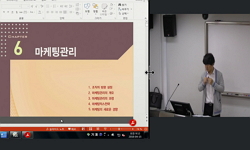본 논문은 한국과 일본의 임금피크제 도입 상황과 운영 방식, 실상에 대해 비교 고찰하고, 그를 통해 한국 임금피크제의 발전 방향을 모색하는 것을 목적으로 한다. 한국과 일본은 임금피크...
http://chineseinput.net/에서 pinyin(병음)방식으로 중국어를 변환할 수 있습니다.
변환된 중국어를 복사하여 사용하시면 됩니다.
- 中文 을 입력하시려면 zhongwen을 입력하시고 space를누르시면됩니다.
- 北京 을 입력하시려면 beijing을 입력하시고 space를 누르시면 됩니다.
https://www.riss.kr/link?id=A103252782
- 저자
- 발행기관
- 학술지명
- 권호사항
-
발행연도
2017
-
작성언어
Korean
- 주제어
-
등재정보
KCI등재
-
자료형태
학술저널
-
수록면
224-234(11쪽)
- DOI식별코드
- 제공처
-
0
상세조회 -
0
다운로드
부가정보
국문 초록 (Abstract)
본 논문은 한국과 일본의 임금피크제 도입 상황과 운영 방식, 실상에 대해 비교 고찰하고, 그를 통해 한국 임금피크제의 발전 방향을 모색하는 것을 목적으로 한다. 한국과 일본은 임금피크제를 비슷한 시기에 도입했지만, 제도에 대한 인식과 법적·제도적 차이 등으로 인해 상이하게 운영되었다. 일본은 고령화 문제를 국가적으로 해결하기 위해 정부, 기업, 근로자들이 협력해서 정년연장형 임금피크제를 도입하였다. 이 과정에서 충분한 준비와 효율성 제고 노력, 즉 고령 인력의 합리적 재배치와 활용, 고령에 적합한 업무 개발 등을 통해 기업과 근로자 모두가 만족하는 제도를 정착시켰다. 반면 한국에서는 명예퇴직이 빈번하던 시점에서 근로자는 정년 보장을 원하고, 기업은 인건비를 절감하려는 상이한 목적 하에, 법적·제도적 지원이나 안전장치도 없고 준비도 불충분한 채, 정년보장형 임금피크제를 도입한 결과, 많은 불만족과 문제점을 드러내었다. 이를 해결하면서 임금피크제를 보다 합리적으로 발달시키려면 정부, 기업, 근로자들이 협력하여 내용적, 제도적 효율성을 개선해야 한다. 이를 위해 ①정년 연장제의 비중을 단계적으로 늘려가는 방안, ②다양한 고용 형태, 유연 근무제, 고령 인력에 최적화된 직무 개발 방안, ③고령 인력에 특화된 교육·훈련 프로그램 제공과 전직, 이직, 창업 지원 강화, ④정년 후 재고용 확대, 숙련된 업무 노하우 활용 방안 모색, ⑤고령 인력에 대한 업적 평가와 성과급 지급을 통해 업무 효율성을 제고하는 방안 등을 적극적으로 검토·모색할 필요가 있다. 이같은 개선 작업을 통해 기업과 근로자가 상생하고, 사회적으로는 고용 안정화 및 노동 시장 유연성 제고 등을 달성할 수 있도록 노력해야 할 것이다.
다국어 초록 (Multilingual Abstract)
This paper compares the realities of the salary Peak Policy’s status and management processes in Korea and Japan, with the aim of determining the development direction for Korea’s salary Peak Policy’s. Unlike Japan, which successfully achieved c...
This paper compares the realities of the salary Peak Policy’s status and management processes in Korea and Japan, with the aim of determining the development direction for Korea’s salary Peak Policy’s. Unlike Japan, which successfully achieved close cooperation between government, firms and workers in implementing the Retirement Age Extension Type salary Peak Policy, Korea experienced many problems due to lack of preparation. In order to rationally develop the salary Peak Policy, the government, firms, and workers must cooperate to increase the policy’s efficiency via the following steps. First, gradually increase the proportion of retirement age extension. Second, career development that takes into account the various employment types, flexible working hours and aged workers. Third, development of training programs for senior citizen workers, as well as increasing support for changing of jobs and startups. Fourth, expansion of re-employment after retirement age and ways to make use of the skilled labor. Fifth, increasing work efficiency through bonuses and work evaluation that is specialized for aged workers. This paper argues that such measures are necessary for the co-existence of firms and workers, as well as for improving employment stability and labor market flexibility.
목차 (Table of Contents)
- 요약
- Abstract
- 1. 서론
- 2. 고령화 사회와 임금피크제
- 3. 임금피크제의 개념과 유형
- 요약
- Abstract
- 1. 서론
- 2. 고령화 사회와 임금피크제
- 3. 임금피크제의 개념과 유형
- 4. 한국과 일본의 임금피크제 비교
- 5. 결론
- References
동일학술지(권/호) 다른 논문
-
일개요양병원 호스피스·완화의료의 서비스의 직종별 행위 분석
- 한국산학기술학회
- 조현(Hyun Cho)
- 2017
- KCI등재
-
소성처리에 의한 황토의 물성특성 변화 및 용존 중금속 제거능력
- 한국산학기술학회
- 이진원(Jin-Won Lee)
- 2017
- KCI등재
-
- 한국산학기술학회
- 정상훈(Sang-hun Jeong)
- 2017
- KCI등재
-
사고대비물질 누출 시 독성피해 영향범위 상관관계식 개발에 관한 연구
- 한국산학기술학회
- 조가영(Ga-Young Jo)
- 2017
- KCI등재





 ScienceON
ScienceON DBpia
DBpia






